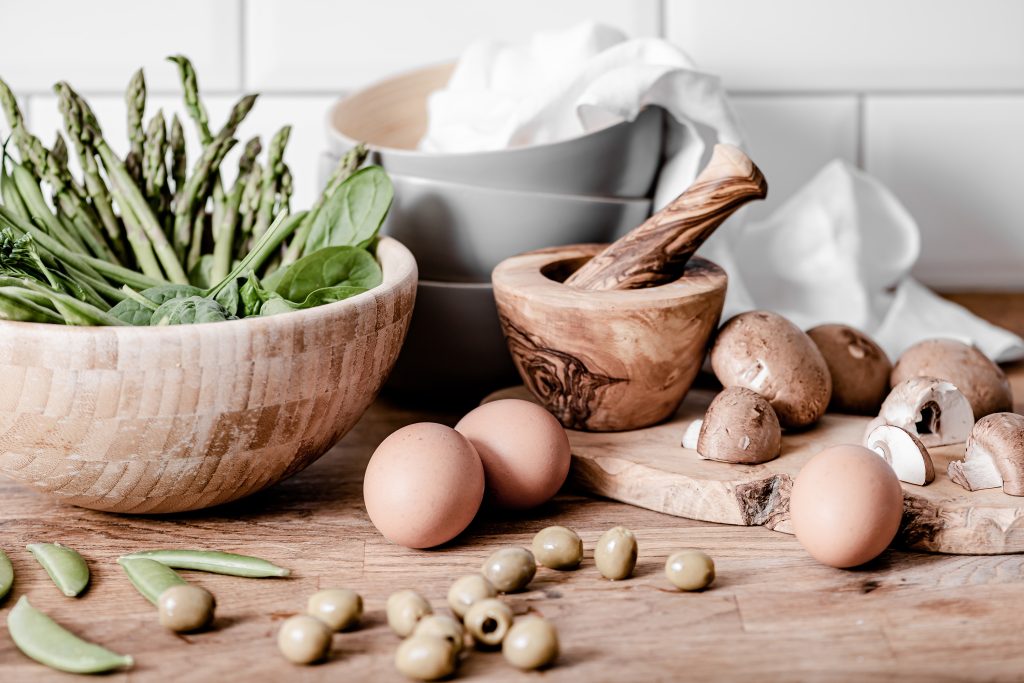Meal planning sounds like a great idea in theory… until you realize your plan requires three kinds of mushrooms, a spiralizer you don’t own, and more prep than your last vacation.
And don’t even get me started on “wellness” meals that involve powders you can’t pronounce and ingredients you’d have to sell a kidney for at Whole Foods.
Here’s the good news: eating well doesn’t have to be expensive and planning your meals doesn’t have to feel like a second job.
You can keep things simple. You can save money. And you can feel good about what you’re eating without crying over kale.
I’ve figured out a few ways to meal plan that actually work whether you’re solo, feeding a family, or just trying to stop ordering DoorDash every night.
These tips and recipes have helped me stretch my budget, eat better, and finally stop wasting food (and energy). Let’s get into the wellness-meets-wallet-friendly goodness that will save your time, cash, and sanity.

Step 1: Start With Base Ingredients You Can Reuse All Week
The biggest mistake I made, Planning totally different meals every single day.
I wanted variety. What I got was a fridge full of half-used produce, mystery sauces, and a grocery bill that screamed chaos.
Now I keep it simple. I plan meals around 4–6 base ingredients that can be mixed and matched all week.
Think:
- Brown rice or quinoa
- Roasted chickpeas or lentils
- Sweet potatoes or carrots
- Rotisserie chicken (if you eat meat)
- A giant bag of greens
No more overbuying. No more “why did I buy dill?” moments.
I plug it all into my Meal Planner Template so I know exactly what’s happening and what I can reuse. Easy, flexible, and way less stress.
Step 2: Pick 3 Go-To Recipes That Don’t Suck
You don’t need 21 different recipes. You need 3 to 4 you actually enjoy eating on repeat.
Let’s skip the sad salads and bland chicken, okay?
Here are a few budget-friendly, wellness-approved favorites:
1. Chickpea Curry – 1 can of chickpeas + curry paste + coconut milk + handful of spinach. Done in 15 minutes and ridiculously satisfying.
2. Sweet Potato & Black Bean Bowls – Roast sweet potatoes, add canned black beans, throw on some rice, salsa, lime, and avocado (if it’s not $12).
3. Lazy Veggie Fried Rice – Day-old rice + frozen stir-fry veggies + an egg + soy sauce = comfort food with actual nutrients.
Double batch them. Eat half now, freeze the rest. That way, future-you doesn’t end up eating cereal for dinner again.
Step 3: Shop Your Pantry First, Then Make the List
I used to head straight to the store without checking what I had. Shocking no one, I’d come home with duplicates, overspend, and still have “nothing to eat.”
Now I start with a quick pantry scan.
What’s about to expire? What needs to get used up? What’s lurking in the back of the freezer behind the mystery popsicles?
Make a “use me up” list and build your meals around that. Saves money. Reduces waste. And gives those neglected chickpeas a second chance.
Then I make a grocery list by category:
- Proteins
- Grains
- Produce
- Snacks & wellness items
- Fun extras (because joy belongs in your cart too)
Step 4: Cook Once, Eat Twice (or More)
This is my top lazy genius hack.
When you’re already cooking, just double the recipe. You’ve already chopped. You’ve already turned on the stove. Might as well make it worth it.
I double:
- Soups
- Curries
- Casseroles
- Breakfast burritos
- Baked oatmeal cups
Then I freeze the extras in stackable meal prep containers or silicone bags so I’m ready when life gets busy or when my will to cook has left the building.
Meal prepping doesn’t need to be a Sunday-long ordeal. Just make extra when you’re already in the kitchen. That’s it.
Step 5: Budget for Wellness Without Going Broke
Let’s talk about “wellness” for a sec. The kind that’s marketed to us like we need 45 powders and a smart blender to feel good.
Nope.
Wellness can be:
- Adding chia seeds to your overnight oats
- Having tea at night instead of caffeine at 9PM (guilty)
- Frozen veggies that steam in five minutes
- Garlic, lemon, and ginger aka wellness MVPs
I still budget a little extra each week for one feel-good grocery treat. Maybe it’s a fancy almond milk. Maybe it’s that magnesium powder that helps me sleep. Maybe it’s just really good peanut butter.
Because when you plan for those small upgrades, they don’t feel like splurges. They feel like intention.
And they keep you from impulse-buying $48 mushroom dust on Instagram.
What Helped Me the Most?
- Letting go of “perfect” and aiming for doable
- Using a real planner instead of keeping everything in my head
- Having 3–4 base meals that I don’t get sick of
- Budgeting for joy (because deprivation never works long-term)
- Freezing leftovers like a meal-prepping magician
Meal planning stopped being stressful once I focused on repeatable meals, flexible ingredients, and giving myself some grace.
I’m not cooking five-star meals. But I am eating food that makes me feel good, saves me money, and doesn’t require emotional labor to make.

